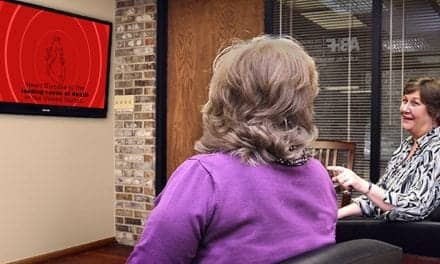
|
| Paul Findly, MBA, is director of marketing at CareCredit Costa Mesa, Calif. |
By Paul Findly, MBA
In a recent survey,1 32% of patients agreed that, without an obvious payment solution, they would ask the practice to bill them in order to purchase hearing aid technology. While every hearing care professional wants to do what they can to help patients overcome cost concerns, the expense associated with billing or extending credit in-house can have a dramatic effect on the financial health of a practice. From reduced cash flow and the depreciating value of uncollected funds, to the losses incurred through bad debt write-offs, what you don’t know about your accounts receivable (A/R) can put your practice at financial risk.
Assessing A/R Risk
Nearly every practice has some degree of accounts receivables. In fact, most practices simply consider it part of the cost of doing business.
But just how much A/R on your books is considered acceptable? As a matter of reducing costs, as little as possible. However, as a general rule of thumb, your total accounts receivable should be no more than two times your monthly charges. For example, if the monthly charges of your practice add up to $50,000, your total accounts receivable should be no more than $100,000.
Another factor to consider when assessing A/R is the percentage of your accounts receivable that is aging. Generally speaking, less than 15% of your accounts receivable should be more than 90 days old.
Once an account is past the 90-day mark, many practices consider the services of a collections attorney or agency to help them recover their funds. This is a difficult thing to do for some dispensing professionals—people who entered the business to help people—who are charged with caring for their clients and charging their clients fees in order to continue offering their services. In most cases, it’s simply a matter of business survival. However, it’s important to understand that, when using a service like this, you will retrieve only a portion of the outstanding funds—and the cost to recover it can be considerable.
Here’s why. Collection agents are paid by keeping a percentage of the money they collect, which often ranges between 20% and 40% of the original debt. The fee or commission the attorney/agency charges you to collect the delinquent funds is usually 25% to 50% of the amount collected.
For example, if your agency successfully collects 50% of a $2,000 debt and charges 35% commission—you’ll recover only $650. In other words, $1,350 of the $2,000 charge is lost revenue for your practice. Whether you decide to use a collection agency or not, the likelihood of recovering full payment on past due accounts is slim. In fact, research shows that, for every dollar sitting in your accounts receivable for no more than 91 days, you only stand to collect about 73 cents. And, for delinquent accounts over a year, you’ll be lucky to collect 26 cents on the dollar.
Billing, Collections, and the Cash Flow Crunch
Most dispensing professionals offer to bill their patients when necessary. However, when you consider the investment of time and resources it takes to process and mail billing statements, track down late payments, and make collection calls, the cost a practice incurs to provide this value-added service in-house can be considerable. In fact, if just one employee devotes half of their time to collections, the cost to the practice can add up to more than $20,000 a year.
In addition to these costs, extending credit to patients in-house can be expensive to the practice in terms of reduced cash flow. The credit card industry has ingrained into the greater consumer conscience the ease and convenience that people can enjoy by making partial payments on their bills. But unlike those companies, your practice makes no interest on any of the money sitting in accounts receivable. In the meantime, overhead costs—including payroll, rent, supplies, and equipment—continue to add up, while fees go uncollected. Over time, this can create a cash flow crunch, with more money tied up in accounts receivable than there is coming into the practice.
Getting Out of the Banking Business
If your practice has a high amount of accounts receivable, experts advise implementing an aggressive strategy to convert it into cash as soon as possible. One way to reduce A/R while still providing patients with a financial solution is to offer a third-party financing program.
Research shows that health care providers who offer a payment program were able to decrease their accounts receivable aging by 37.7%2 and reduce their billing and collection costs. In addition to providing new patients with a convenient payment option, practices can use third-party financing to reduce existing A/R by giving patients the opportunity to move their current accounts over to the third-party program.

|
| Business Basics: Using Your Financial Statements as a Road Map to Success by Paul Findly, MBA. |
Offering third-party financing lets practices provide patients with a monthly payment option without assuming the risk and cost of accounts receivable. Practices increase cash flow by receiving guaranteed payment in as little as two business days. And, with a non-recourse program like CareCredit, they have no responsibility should the patient be slow to pay or default on the loan. By turning patient financing over to the financing professionals, it allows the practice more time to focus on what matters most—providing optimal care for patients, rather than the hassles involved with billing and collections.
With the cost of digital hearing instruments averaging $2,022,3 patients are looking to hearing care professionals to provide payment options that make it easier to afford recommended technology. Providing alternative sources of patient financing is an effective way to reduce the financial risk and the costs of carrying accounts receivable—and help you improve your practice’s financial health.
References
- Inquire Market Research. Purchase behavior among hearing loss patients: results of a study with 200 patients requiring a hearing device. Santa Ana, Calif: Inquire Market Research; 2006.
- Academy of Dental Certified Public Accountants. ADCPA releases study on impact of CareCredit. Available at:
www.enovadent.com/forum/viewtopic.php?t=16&sid=eb68d1c0fb3721935de7ef4195281a6a;
July 2005. Accessed September 13, 2007. - Strom KE. The HR 2006 dispenser survey. Hearing Review. 2006;13(6):16-39.
Correspondence can be addressed to [email protected] or Paul Findly at .




